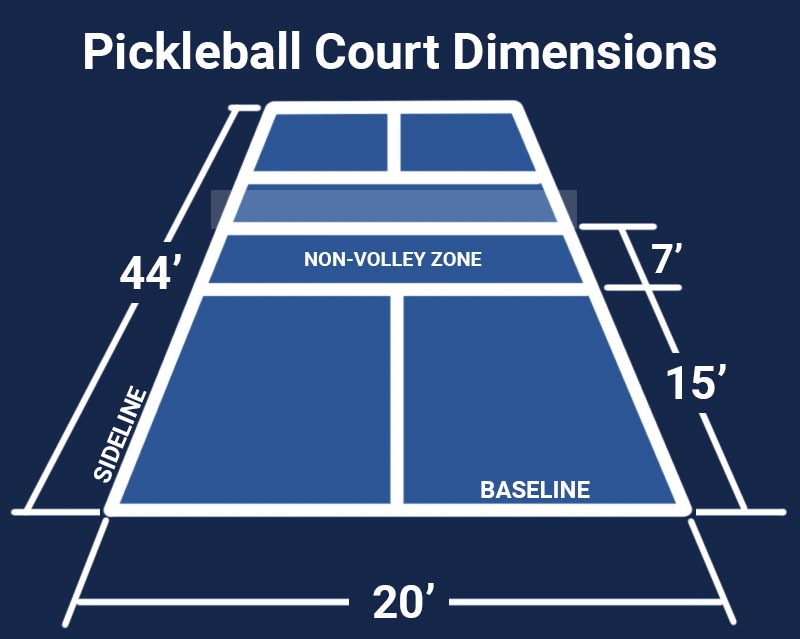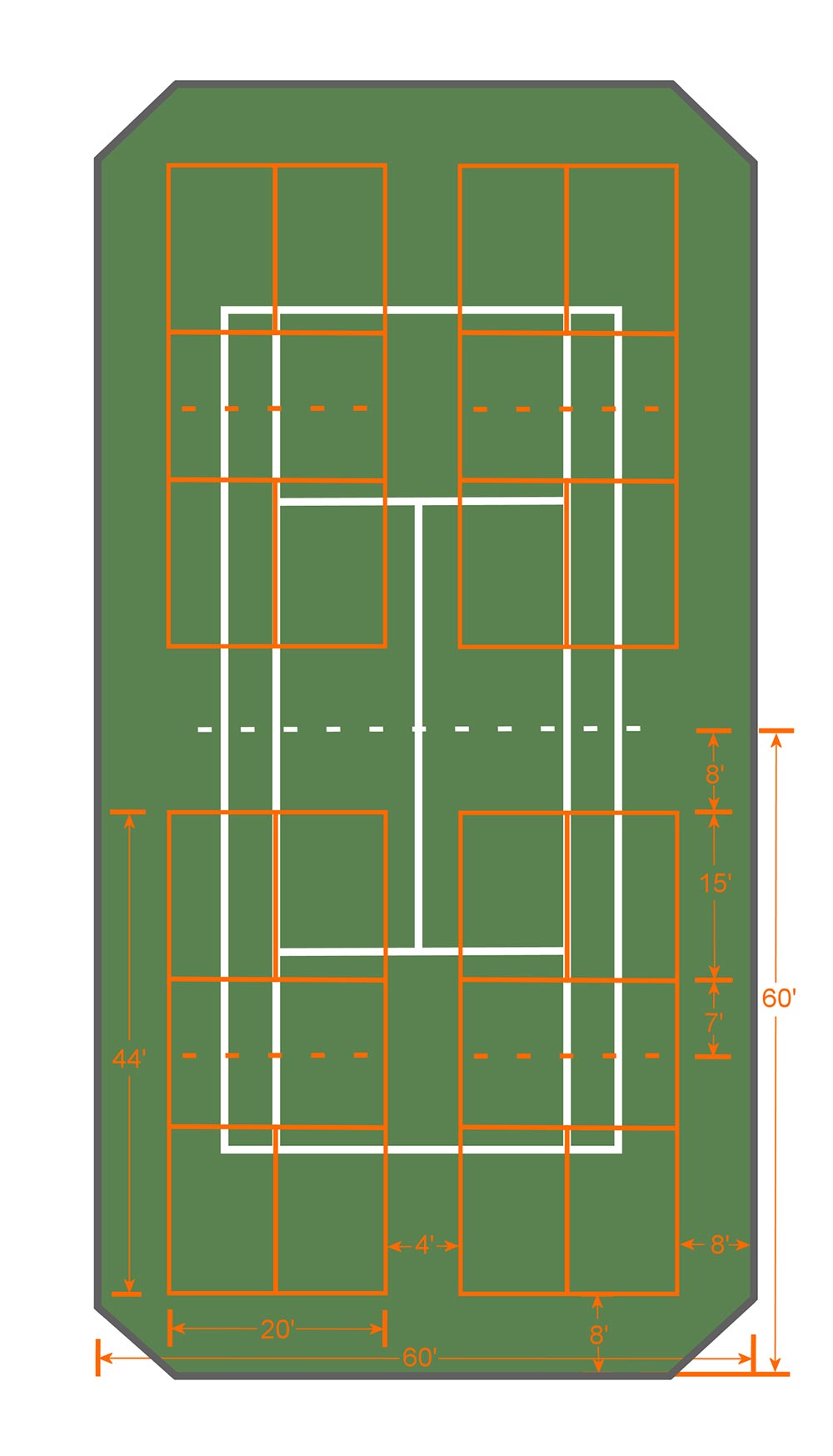Why Illinois and Midwest Are Choosing United States for Pickleball Courts Design & Building
Why Illinois and Midwest Are Choosing United States for Pickleball Courts Design & Building
Blog Article
Key Consider the Building And Construction of Pickleball Courts: From Website Choice to Final Surfaces
The building of pickleball courts incorporates an array of crucial elements, starting with the option of an ideal site that balances ease of access with ecological factors to consider. Crucial elements such as court dimensions, surface materials, and drain systems substantially influence not just the top quality of play yet additionally the longevity of the facility.
Website Option Criteria
When embarking on the construction of pickleball courts, it is vital to nail down the site selection criteria that will guarantee optimal playability and ease of access. The location must be easily reachable for gamers, preferably located near houses or community centers, to urge involvement.
Additionally, the terrain must be degree and secure, as irregular ground can cause safety threats and influence gameplay. Adequate water drainage is also essential; selecting a website with excellent water overflow will aid preserve court conditions throughout damaging weather condition.
Another vital factor to consider is the accessibility of utilities. Accessibility to electrical energy and water is required for lighting and upkeep purposes. In addition, distance to vehicle parking facilities is crucial, assisting in easy accessibility for players and viewers alike.
Environmental variables can not be ignored; natural color from trees can enhance gamer comfort, while direct exposure to prevailing winds may disrupt play. Finally, zoning guidelines and community assistance need to be thought about to ensure that the job straightens with regional standards and receives the support it needs for successful execution. By meticulously evaluating these requirements, stakeholders can develop an inviting and functional atmosphere for pickleball fanatics.
Court Dimensions and Design
To make certain optimal gameplay and adherence to laws, the measurements and layout of pickleball courts need to be meticulously defined. A common pickleball court gauges 20 feet in width and 44 feet in length for both singles and doubles play. The advised format includes a non-volley zone, frequently described as the "cooking area," extending 7 feet from the net on either side. This area is vital, as it affects player positioning and shot selection - Illinois and midwest.
The web height is set at 36 inches at the sidelines and 34 inches at the center, developing a mild dip that affects sphere trajectory. Court markings are just as crucial; lines need to be 2 inches vast and unique in color to make sure presence.
Furthermore, a buffer zone bordering the court is a good idea, usually prolonging 5 to 10 feet beyond the sidelines and standards to suit gamers' movements and improve security. Appropriate format and dimensions not just guarantee conformity with main regulations yet likewise boost the general playing experience, accommodating both entertainment and affordable play. Careful preparation in these locations is vital to the successful construction of pickleball courts.
Surface Area Material Options
Choosing the best surface area product for pickleball courts is vital for making sure optimal gamer performance and safety and security. The option of surface can dramatically impact gameplay, including sphere bounce, traction, and gamer comfort.
There are numerous options readily available, each with its unique characteristics. Asphalt is a preferred option because of its toughness and reduced maintenance demands. It supplies a solid having fun surface that can hold up against various weather yet may require regular resurfacing.
Concrete is another widely made use of product, providing superb durability and a smooth coating. It permits regular round bounce but can be difficult on players' joints, making it much less preferable for lasting play without proper cushioning.
For those looking for improved comfort and shock absorption, supported acrylic surface areas offer a feasible choice. These surface areas incorporate a base layer with an acrylic topcoat, providing enhanced grip and a softer feel, which is helpful for reducing the danger of injuries.
Finally, artificial turf is acquiring traction, specifically for multi-purpose centers. Its versatility and lower maintenance needs make it an appealing alternative, though it might not provide the same sphere action as typical tough courts. Careful consideration of these options will guarantee an ideal playing atmosphere.
Drain and Illumination Factors To Consider
Proper water drainage and efficient lighting more are important components in the building and construction of pickleball courts, dramatically affecting both playability and safety. Adequate water drainage systems avoid water accumulation, which can lead to unsafe surface areas and damage see here to the court framework.
Lights is similarly essential, especially for courts planned for evening usage. Correct illumination improves visibility, making sure that gamers can see the sphere plainly and decreasing the threat of accidents. The positioning of lighting components should be tactically intended to eliminate shadows and supply even circulation of light across the court. LED lights are suggested for their power performance and longevity, providing intense lighting while reducing operational expenses.

Last Coatings and Upkeep
After addressing drainage and lighting considerations, interest turns to the final surfaces and continuous maintenance of pickleball courts. Illinois and useful site midwest. The selection of surface material is vital, as it influences both playability and resilience. Typical options include acrylic coverings and specialized sports surfaces that provide optimal grip and padding. These finishes ought to be applied in several layers to make sure durability against weather condition elements and wear.

Seasonal maintenance may consist of resurfacing every few years, relying on usage and ecological factors. Correctly preserving webs, court lines, and surrounding areas is equally essential to supply a safe and enjoyable having fun experience. By buying quality surfaces and adhering to an organized maintenance routine, facility owners can ensure their pickleball courts remain in exceptional problem for many years to find.
Conclusion
In verdict, the effective building and construction of pickleball courts pivots on careful attention to several vital variables. High quality finishes and a durable upkeep routine are important for maintaining the court's problem, enhancing the total experience for gamers and spectators alike.
Report this page